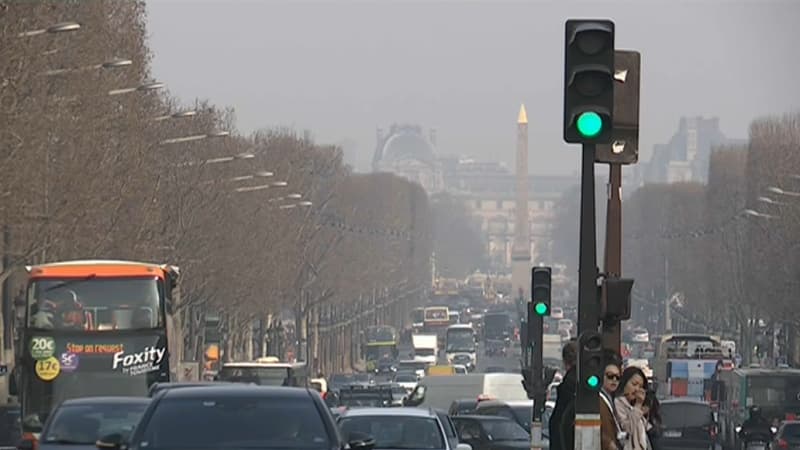Calming discontent among users and supporting local authorities was the objective of the meeting held this Tuesday at the Ministry of Ecological Transition and Territorial Cohesion on the subject of Low Emission Mobility Zones (ZFE-m).
The representatives of the 43 agglomerations affected by this system were present to discuss with Christophe Béchu and his counterpart from Transports Clément Beaune in the framework of the first monitoring committee of the ZFE-m. Among these metropolises, 10 will see the ban applied from next January while the others will have until January 1, 2025 for it to come into force.
The implementation of ZFE-m will have serious consequences. The device aims to gradually ban the circulation of 14 million vehicles carrying Crit’Air stickers, whose level varies between 3 and 5, that is, the most polluting.
“The entire ZFE policy is based on the election of local authorities,” recalled Christophe Béchu in the preamble to the press conference that followed the 2 1/2 hour discussions. local authorities, for example on the time range that can vary from one city to another.
In Paris, Crit’Air 4 or 5 vehicles cannot circulate between 8 am and 8 pm on weekdays, while Lyon does not apply a time limit for Crit’Air 5 vehicles.
Class 3 Fines
This ministerial committee dedicated to the EPZ-m will meet twice a year in order to carry out a regular update on “obstacles and good practices”. A working group will be created especially to harmonize the rules of the EPZ, in particular as regards logistics transport that can connect two different agglomerations.
“We will meet in the coming weeks with a logistics committee so that we can harmonize the rules with the specific work on trucks, heavy vehicles,” said Clément Beaune.
Another working group will deal with issues of social accessibility to prevent EPZs from generating a phenomenon of social exclusion by becoming tolls at the entrance to metropolitan areas. A single interlocutor with cross-cutting powers will also be appointed who will act as a ministerial reference.
“EPZs are a necessity for public health and ecology issues, but they should not be an area of social or industrial explosion,” insisted the Minister of Transport.
As for the effective monitoring of the device, a control-sanction will be established in the form of a radar from the second half of 2024 with automatic license plate reading. “It would be more than 24 continuous hours, not at each step in front of the radar if we go around an agglomeration”, specified Christophe Béchu. The fines issued will be class 3 – a fixed fine of 68 euros – and will be allocated to the affected territories. In addition, the ZFE territories will benefit from a credit line from the green fund with an allocation of up to 150 million euros.
Part of the green fund and aid measures
At the same time, support systems will be strengthened to ensure the most flexible implementation possible for motorists. This is the case of the ecological bonus that has just been increased to 7,000 euros for the poorest 50% of French households. A conversion bonus of up to €5,000 may be added for new or used vehicles if a Crit’Air 3 vehicle is scrapped.
Likewise, Christophe Béchu announced a modification of the ZFE surcharge of 1,000 euros until now reserved for intercommunals that established a local bonus: “We are eliminating the condition of reciprocity and the ZFE surcharge will be possible in the affected territories for its inhabitants. But also those who they work there.
Finally, the Minister for the Ecological Transition and Territorial Cohesion also mentioned the existence of the zero-rate loan that aims to resolve the issue of the remainder to be paid. as well as social leasing that allows you to benefit from a monthly bonus of 100 euros to have an electric vehicle. The rules on the latter will be clarified early next year to allow reservations from mid-2023.
For his part, Clément Beaune affirmed his desire to create a retrofit sector to promote the lower-cost conversion of a vehicle from a thermal engine to an electric one by launching a call for projects of 20 million euros for companies that practice it.
“When you put all the devices end to end, it is an effort without comparison in Europe, stressed Clément Beaune. The public transport policy is 12 billion euros, 10% of which goes to the greening of the fleet Of automobiles”.
Finally, a working group will focus on maritime EPZs while “maritime thermal vehicles can also contribute to this air pollution”, as explained by Christophe Béchu, citing the work of La Rochelle or Marseille on this topic.
Source: BFM TV


